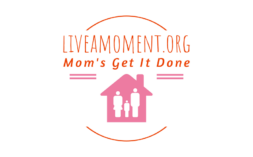These days, with everything moving so fast and everyone always online, it’s easy to forget how much the human side of work really matters. We spend so much time chasing goals, optimizing processes, and hitting KPIs that we sometimes overlook something profoundly simple yet incredibly powerful: the need to be appreciated.
Appreciation isn’t just about being polite. It’s about acknowledging someone’s effort, their presence, and the unique value they bring to a team. When it’s genuine and intentional, appreciation becomes a powerful tool—not just for boosting morale but for cultivating connection, trust, and purpose within a workplace.
Yet far too often, recognition becomes another box to check: a pre-scripted “thank you” in an annual review, a rushed shout-out in a crowded meeting, or a generic gift card handed out with little context. These gestures may be well-meaning, but without intention, they risk becoming hollow.
So what does it look like to give with intention—especially in a professional setting? And how can organizations build recognition into their culture in a way that actually means something?
Why Recognition Needs a Rethink
Let’s start with the truth: most employees aren’t looking for grand gestures. They’re not expecting trophies, elaborate ceremonies, or over-the-top praise. What they’re really seeking is to feel seen.
It could be as simple as a manager saying, “I noticed how you handled that situation with empathy and clarity. That really stood out.” Or a peer acknowledging that someone stayed late to help them finish a deadline. These kinds of moments carry emotional weight because they show specific appreciation, rooted in real behavior.
Too often, recognition is treated like a reward for output. But true appreciation isn’t just about results—it’s about the person behind the work. Their thoughtfulness. Their resilience. Their willingness to collaborate. These are the qualities that build strong teams, yet they’re often the ones that go unspoken.
Giving With Intention Means Being Present
To give with intention is to be present—to slow down enough to actually notice what’s happening around you.
It’s about tuning in to the moments where someone goes above and beyond, not because they had to, but because they care. It’s about catching the small wins, the quiet efforts, the acts of kindness that keep a team connected.

Intentional recognition also means letting go of one-size-fits-all approaches. Not everyone likes public praise. Not everyone is motivated by financial incentives. Some may prefer a handwritten note over a team-wide shout-out. The key is to know your people. Ask them how they like to be appreciated. Then meet them there.
Recognition as Culture, Not Just a Practice
When you embed intentional recognition into your culture, it becomes less of a program and more of a mindset. It shows up in how meetings are run, how feedback is given, and how success is celebrated.
Organizations that get this right don’t just appreciate their employees when they land a big deal—they celebrate consistency, growth, and effort. They make space for gratitude, not just during performance reviews, but every day.
They also empower everyone on the team to recognize each other. Peer-to-peer recognition can be just as powerful—sometimes even more—than manager-to-employee praise. It reinforces a sense of community and shared values.
Tools That Support Intentional Recognition
Of course, in a growing organization, it can be challenging to scale personal recognition without losing authenticity. That’s where thoughtful tools and systems come in—not to automate appreciation, but to support it.
For example, an employee recognition visa cards system allows teams to tie tangible rewards to moments of genuine appreciation. When used with intention, this kind of system gives employees the freedom to choose rewards that feel personally meaningful, while ensuring the recognition they receive is timely and connected to specific actions.
But the tool is only as good as the mindset behind it. If you’re using a reward system just to check off a list, it won’t land. But if you pair it with authentic, specific acknowledgment, it can become part of a larger culture of care.
Make It Meaningful—Every Time
So how do you make sure your appreciation efforts aren’t just noise?
Here are a few simple but powerful guidelines:
- Be specific: “Thanks for the help” is okay. “Thanks for staying late to help with that report—it made a big difference, and I really appreciated your attitude” is better.
- Be timely: Recognition loses its impact if it’s delayed. Try to acknowledge great work as close to the moment as possible.
- Make it personal: Know what kind of recognition resonates with the individual. Some prefer private feedback, others love the spotlight. There’s no universal formula.
- Tie it to values: When you connect appreciation to your company’s core values (“You really embodied our value of compassion in that client interaction”), it reinforces the kind of culture you want to build.
- Don’t wait for milestones: Recognize effort consistently—not just on work anniversaries or holidays. Everyday appreciation builds a stronger foundation.
The Ripple Effect
Here’s the beautiful part: when people feel genuinely appreciated, they give more. Not because they’re chasing a reward, but because they feel emotionally invested. They care more deeply, they support each other more consistently, and they show up more fully.
That kind of engagement can’t be faked or forced—it has to be nurtured. And it starts with small, intentional acts of appreciation.
Final Thought
Recognition doesn’t have to be complicated. It doesn’t have to be expensive. And it definitely doesn’t have to be performative. But it does have to be real.
So the next time someone on your team does something great, pause. Take a moment. Look them in the eye (or send that thoughtful message), and let them know exactly what you appreciated—and why it mattered.
Because when we give with intention, we don’t just say thank you—we build trust, deepen connection, and create workplaces people are proud to be part of.
And that kind of appreciation? It lasts longer than any pizza party ever could.


